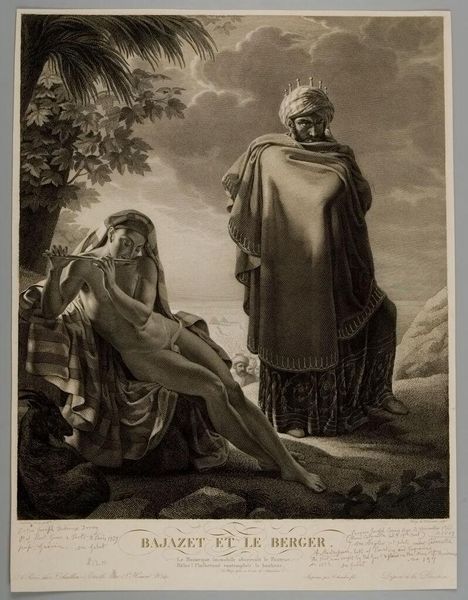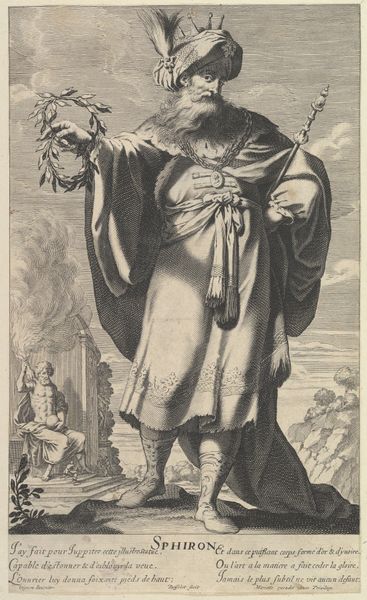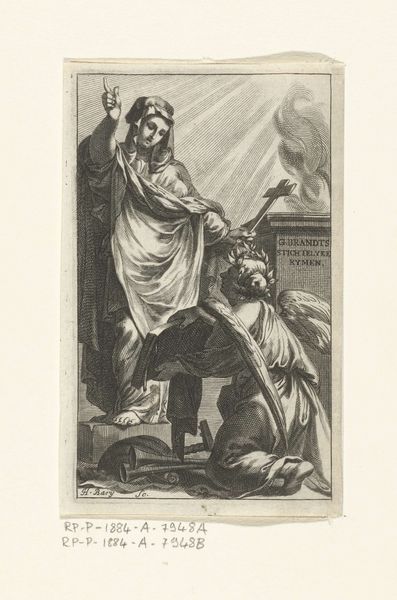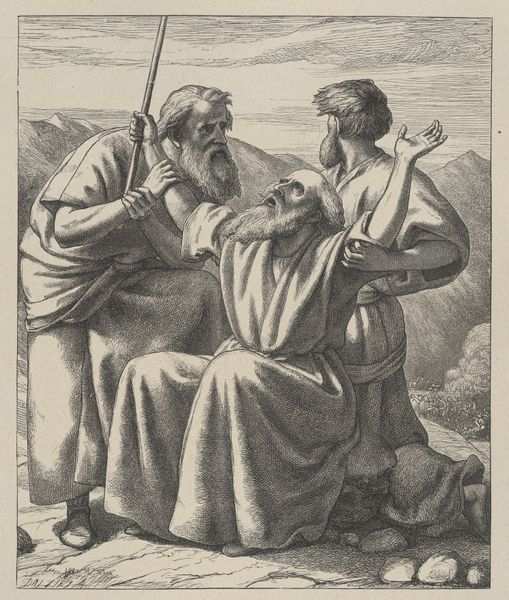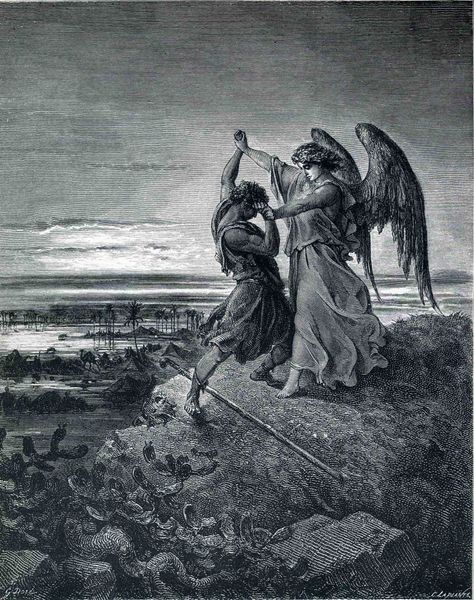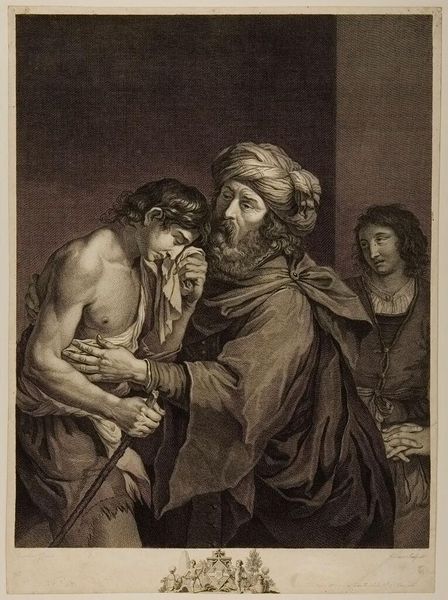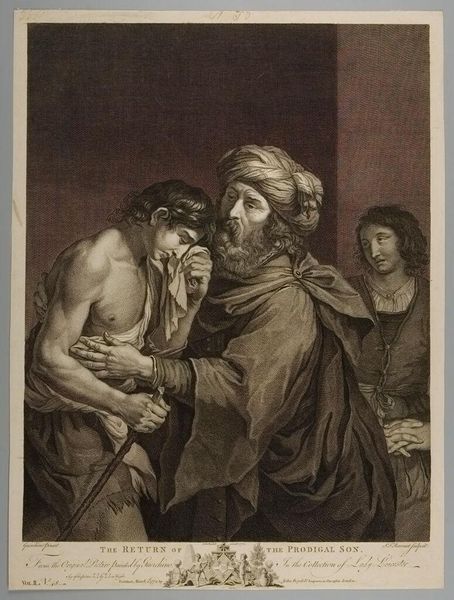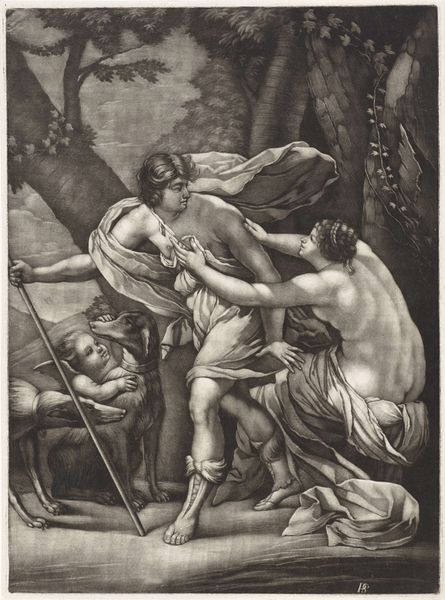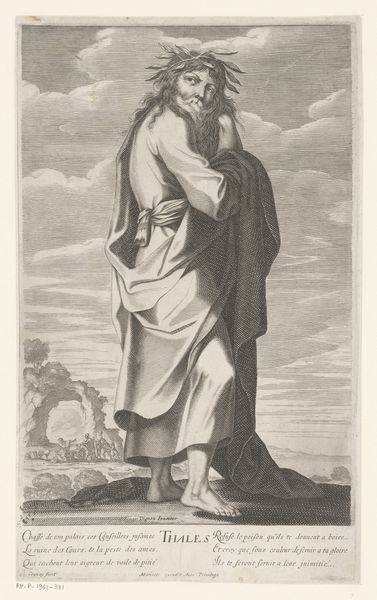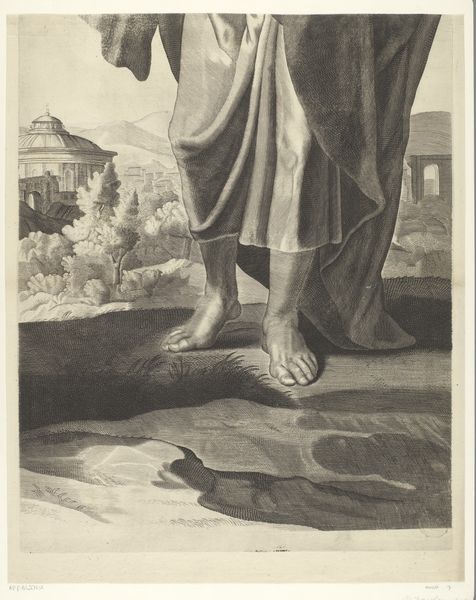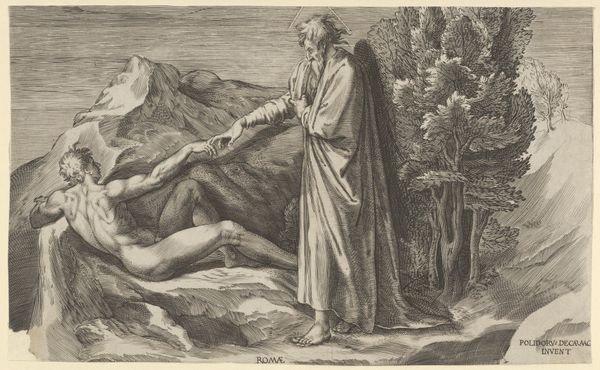
painting, oil-paint
#
portrait
#
figurative
#
narrative-art
#
painting
#
oil-paint
#
landscape
#
figuration
#
classicism
#
romanticism
#
history-painting
#
academic-art
Copyright: Public Domain: Artvee
Curator: Well, isn’t this something? At first glance, the color palette, that serene and rosy sky… It’s melancholic, don’t you think? Like a half-remembered dream. Editor: Indeed. What we're observing is François Gérard's 1797 painting, "Belisarius." It presents a pivotal narrative extracted from the life of a renowned Byzantine general. Curator: Oh, I sense the history painting immediately, but the sky is quite sentimental—such a contrast. Now, enlighten me! Who *is* Belisarius and what's with this small child hugging his neck? Editor: Belisarius, a brilliant military leader, was falsely accused of treason by Emperor Justinian, leading to his downfall—tradition has it that he was blinded and reduced to begging for a living. Curator: A bittersweet fate for an honest soldier... The romantic in me sees parallels with so many of history’s fallen heroes and discarded muses! And the Classicist style heightens that tragic nobility. The weight of unjust accusation practically radiates from the old man. But, is that really an example of academic painting? Seems quite idealized. Editor: It's an interpretation heavily laden with didacticism and Romantic sensibilities—observe the emphasis on virtue amidst adversity. It speaks to power, the fickleness of public favor, and what it meant to create an empathetic "history" lesson for its time. Consider also how visual languages around blindness evolved and what their cultural functions were. Curator: Ah, so the child, I assume, is an allegorical figure? A glimmer of hope, or perhaps innocence offering him comfort in this desolate moment? What a sharp counterpoint to his world-weary expression. The story and the image now feel connected at an elemental level! Editor: Not allegorical per se, but rather, a poignant display of compassion, suggesting an alternative moral compass to the Emperor’s ruthlessness. He represents a society capable of seeing beyond slander to the man’s true character. The painting functions as a subtle indictment against systemic injustices. Curator: Which in turn triggers thoughts on current day injustices. It all becomes a beautiful metaphor on canvas. Thank you, this artwork with a touch of social commentary gives one quite a bit to think about. Editor: Precisely. Perhaps what remains is a renewed recognition of how deeply historical painting and current activism continue to shape our vision.
Comments
No comments
Be the first to comment and join the conversation on the ultimate creative platform.

